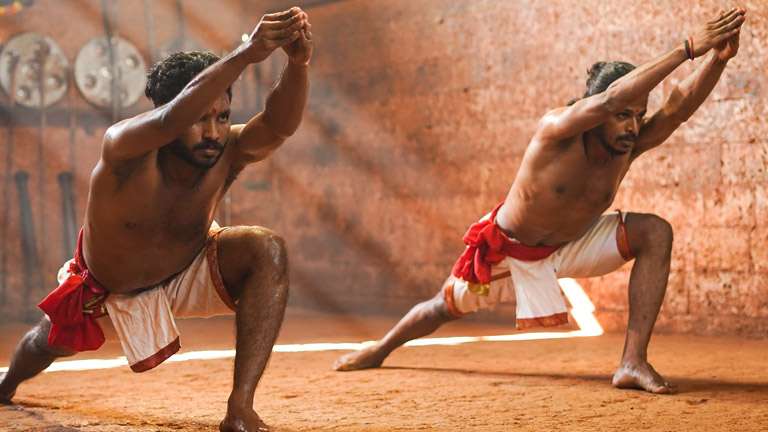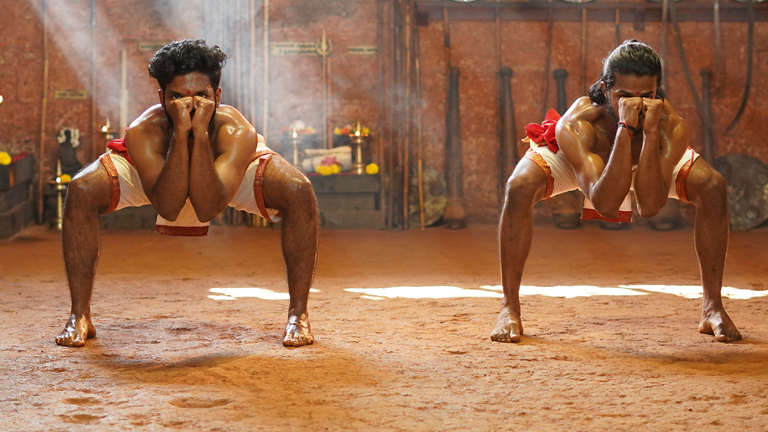



While the choice of a particular chuvadu automatically decides the vadivu or stance of the combatant, Kalaripayattu makes an exhaustive inventory of them, drawing inspiration from the postures, attitudes, and stances of various animals as they adopt the fight or the flight mode of self-protection.

Some of them are Gaja vadivu (elephant), Simha vadivu (lion), Ashwa vadivu (horse), Varaaha vadivu (wild boar), Sarpa vadivu (snake), Kukkuda vadivu (cock), Marjaara vadivu (cat) and Matsya vadivu (fish). These are called Ashta Vadivukal [ Eight Vadivs]. The first three of the above-mentioned vadivus are judged as the most effective ones.
What each of these Kalaripayattu stances exploit is the most advantageous aspect of the particular bird’s or animal’s attack and defence techniques. For instance, the snake posture gives the combatant enough room for quick movement in any direction and a powerful lunge forwards; the peacock stance – with spread-out arms – gives him the benefit of maximizing his body area to keep the enemies at bay before launching an attack on them, and so on. Breath control is considered very important for the student to maintain these stances with strength and balance.
Department of Tourism, Government of Kerala, Park View, Thiruvananthapuram, Kerala, India - 695 033
Phone: +91 471 2321132, Fax: +91 471 2322279, E-mail: info@keralatourism.org.
All rights reserved © Kerala Tourism 2026. Copyright | Terms of Use | Cookie Policy | Contact Us. Developed & Maintained by Invis.